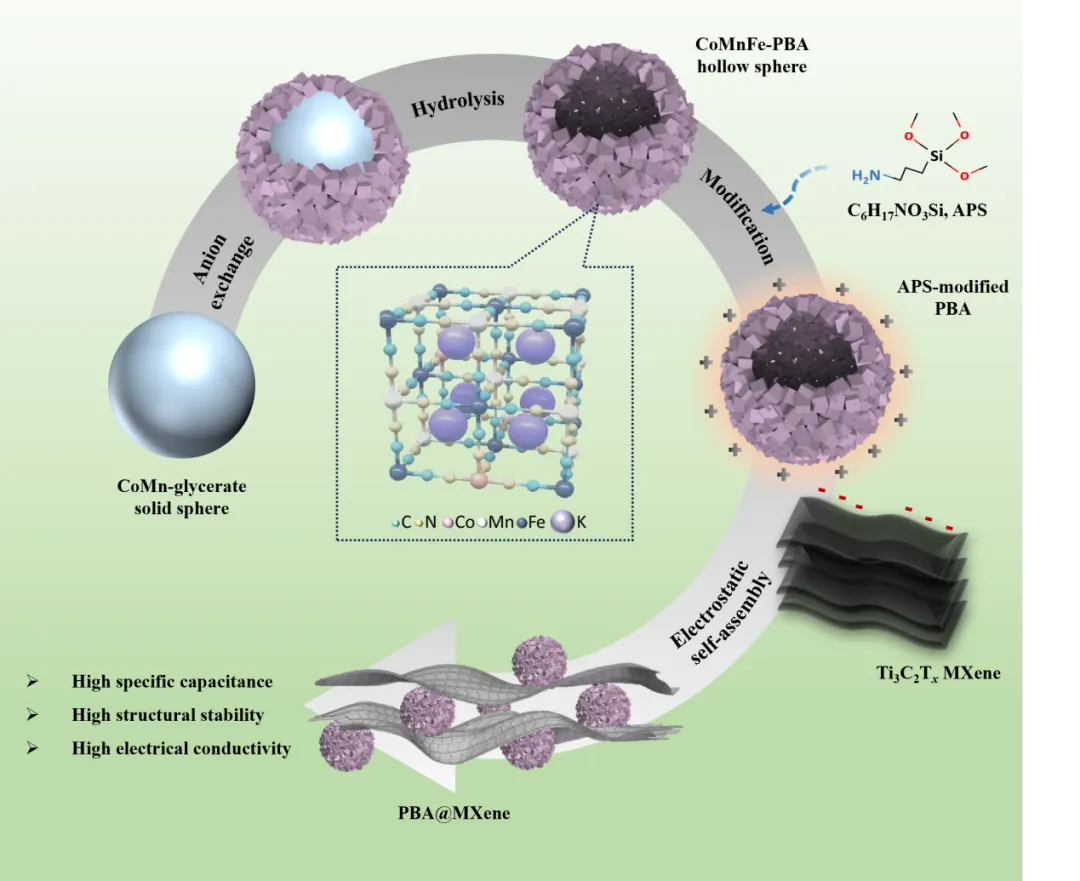30 May 2025
Recently, Dr Meng Ding's team from the Department of Chemistry and Materials Science, School of Science, Xi'an Jiaotong-Liverpool University (XJTLU), published significant research findings in the internationally renowned journal, Chemical Engineering Journal. The research, guided by Dr. Ding and led by PhD student Wei Zhou , involved the electrostatic self-assembly of aminated ternary-metal Prussian blue analog hollow spheres (CoMnFe-PBA-HSs) embedded into layered Ti3C2Tx MXene at a 5:2 ratio, designing and developing a novel electrode material for hybrid capacitive deionization (HCDI).
As an emerging seawater desalination technology, capacitive deionization (CDI) is characterized by high energy efficiency, sustainability, and low energy consumption. Electrode materials are central to this technology and critically determine desalination performance. Traditional carbon-based materials generally exhibit low desalination rates and are often accompanied by co-ion effects that limit performance. In contrast, Faradaic materials offer higher adsorption capacities.
According to Dr Ding, among Faradaic electrode materials, Prussian blue analogs (PBAs) have garnered considerable attention due to their unique open-framework structure and abundant Na+ insertion/extraction channels. While traditional PBAs possess high adsorption capacities, their structural integrity is often compromised by severe distortions caused by the Jahn-Teller effect, leading to shorter cycling lifetimes. To address these issues, many researchers have attempted to enhance the stability of PBAs through various strategies.

Fig. 1. Schematic illustration of the preparation process of PBA@MXene.
In this study, the team utilized highly conductive Ti3C2Tx-MXene as a conductive substrate and employed an electrostatic self-assembly method to load the ternary metal hollow spheres CoMnFe-PBA-HSs onto the MXene. With MnFe-PBA as the main framework, cobalt substitution was used to suppress lattice distortion during charge-discharge cycling, thereby enhancing the stability of MnFe-PBA. Concurrently, a hollow structure was designed for CoMnFe-PBA, which is expected to exhibit higher structural stability during ion insertion/extraction processes, increase the specific surface area, and provide abundant active sites. Finally, high-quality Ti3C2Tx was combined with CoMnFe-PBA-HSs to improve conductivity. The CoMnFe-PBA-HSs, functionalized by (3-aminopropyl)trimethoxysilane (APS), established a strong connection with MXene through electrostatic forces. Through the synergistic effect of PBA and MXene, the composite material achieved a maximum salt adsorption capacity (SAC) of 328.3 mg g-1 (at a NaCl concentration of 5000 μS cm-1 and a current density of 20 mA g-1), exhibiting excellent cycling stability (with a capacity retention rate of 100% over 80 cycles). This novel composite material offers a rational design strategy based on the synergistic effects of multiple components for the composite direction of PBA and MXene, thereby advancing the development of HCDI technology. The innovative nature of this high quality research is further evidence of the increased scholarly prominence of the Department of Materials Science and Engineering, School of Science and XJTLU on a global scale.
Content: Dr Meng Ding, Weizhou
Editor:Luyao
Review:Professor John Moraros
30 May 2025







